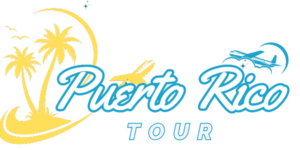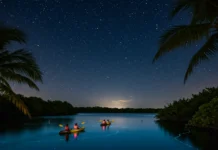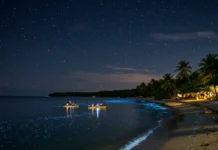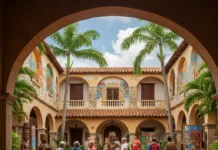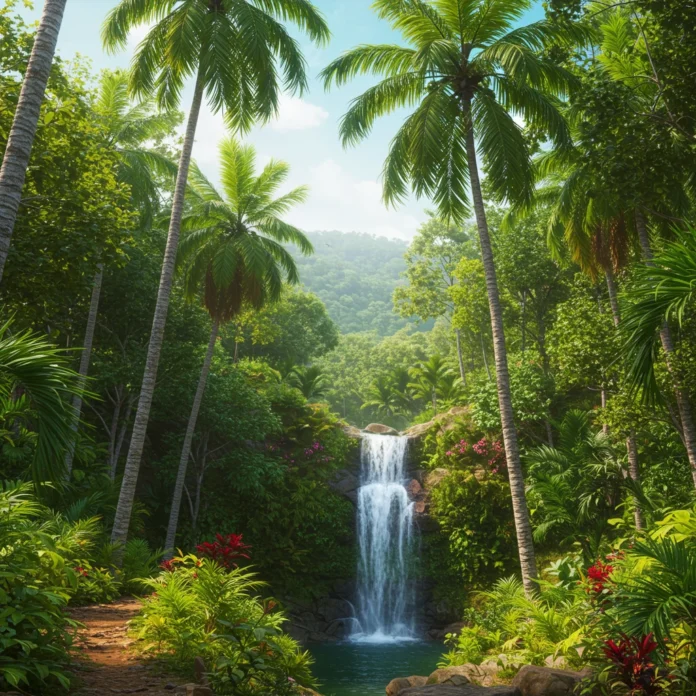Introduction: Discovering El Yunque in Puerto Rico
Nestled in the heart of the island, El Yunque National Forest captivates with its lush green canopies, misty peaks, and vibrant wildlife. For many travelers, it represents the soul of Puerto Rico’s natural beauty—home to cascading waterfalls, rare flora, and a chorus of tropical birds. Whether you’re drawn by adventure or serenity, El Yunque promises unforgettable moments among its emerald landscapes.
As we guide you through everything you need to know about visiting El Yunque, you’ll find practical information, local insights, and inspiration for planning your trip to this extraordinary rainforest.
What Is El Yunque National Forest?
El Yunque National Forest is the only tropical rainforest in the United States National Forest System. Spanning nearly 29,000 acres, it is celebrated for its dense vegetation, diverse wildlife, and rich cultural history. Towering trees, thick vines, and the soothing sounds of coquí frogs create a sensory feast from the moment you arrive.
Why Is El Yunque Famous?
El Yunque is renowned for its dramatic landscapes, abundant rainfall, and exceptional biodiversity. Visitors flock here to experience the magic of its cloud forests, hike to breathtaking waterfalls, and spot rare creatures like the Puerto Rican parrot. Its trails and vistas have inspired countless artists, photographers, and nature lovers.
For those seeking the lesser-known wonders within the forest, we recommend reading about hidden gems on your next El Yunque visit.
A Brief History of El Yunque
The roots of El Yunque stretch back centuries, with its lands revered by the indigenous Taíno people. The forest became a protected reserve under Spanish rule in 1876, and later, the United States designated it as a national forest. Over time, El Yunque has been a symbol of conservation and cultural pride, weathering hurricanes and serving as a living laboratory for scientists.
Where Is El Yunque Located in Puerto Rico?
El Yunque is situated in the northeastern region of Puerto Rico, draping across the Sierra de Luquillo mountain range. Its position places it within easy reach of major cities while still feeling worlds away from urban bustle. The forest’s boundaries are defined by winding roads, lush valleys, and steep ridges.
How to Find El Yunque on a Map
On most maps, El Yunque appears as a prominent green expanse southeast of San Juan. The main entrance lies along PR-191 near the town of Palmer. GPS navigation guides visitors directly to El Portal Visitor Center, the forest’s primary gateway.
Which Municipalities Border El Yunque?
The forest is bordered by several municipalities, including Río Grande, Luquillo, Naguabo, and Canóvanas. Each town offers unique perspectives and access points to El Yunque, along with local dining and lodging options.
How Far Is El Yunque from San Juan?
El Yunque is approximately 25 miles (40 kilometers) east of San Juan. The drive takes about 45 minutes to one hour, depending on traffic and weather conditions. This proximity makes it a popular day trip for both locals and visitors.
What Are the GPS Coordinates of El Yunque?
The main entrance to El Yunque, at El Portal Visitor Center, is located at 18.3467° N, 65.7520° W. These coordinates will bring you straight to the heart of the rainforest, where your adventure begins.
How Big Is El Yunque National Forest?
Covering nearly 29,000 acres, El Yunque is a vast sanctuary of biodiversity and natural beauty. Its area encompasses rugged mountains, deep valleys, and pristine rivers, making it one of the most ecologically significant regions in Puerto Rico.
Understanding the Boundaries of El Yunque
The forest’s boundaries are defined by a combination of natural features and administrative borders. While the core area is federally protected, adjacent land remains under local jurisdiction, creating a dynamic edge where rural life meets wilderness.
What Towns Are Closest to El Yunque?
The closest towns to El Yunque are Río Grande, Palmer, Luquillo, and Naguabo. Each serves as a convenient base for exploring the forest, offering amenities such as hotels, restaurants, and guided tours.
Driving Distances from Major Puerto Rican Cities
To help plan your journey, here are approximate driving distances to El Yunque from popular cities:
- San Juan: 45 minutes (25 miles)
- Fajardo: 30 minutes (17 miles)
- Caguas: 1 hour (38 miles)
- Ponce: 2.5 hours (90 miles)
How to Get to El Yunque
Travelers have several options for reaching El Yunque National Forest, ranging from driving to public transportation. Choosing the right method depends on your starting point, budget, and sense of adventure.
Driving Directions to El Yunque
From San Juan, take Highway PR-3 east to Río Grande, then follow signs for PR-191 south toward the forest entrance. Road conditions are generally good, and the route offers glimpses of the coast and rural countryside.
Public Transportation Options
While there is no direct public bus route to El Yunque, travelers can take a bus or público (shared van) to Río Grande or Luquillo, then arrange a taxi or rideshare for the final leg. This method is budget-friendly but requires more planning.
Can You Take a Taxi or Rideshare to El Yunque?
Taxis and rideshare services like Uber or Lyft operate between San Juan and El Yunque. These options offer convenience and flexibility, especially for groups or those without a rental car.
Best Routes for Visiting El Yunque
The most popular route is via the Palmer entrance on PR-191, which leads directly to visitor centers and main trailheads. Alternate routes, such as those from Naguabo, provide access to less-traveled trails and scenic overlooks.
For more insights on adventure routes and thrilling activities in the rainforest, see our advice in Puerto Rico Rainforest Adventures.
El Yunque Entrance Fees and Permits
Entry to the main recreation areas of El Yunque requires a modest fee, which helps support conservation and facility maintenance. Some trails and lesser-known areas remain free to access, but visitor centers and popular sites are ticketed.
Do You Need a Reservation to Visit El Yunque?
Reservations are strongly recommended, especially during weekends and holidays when visitor numbers are highest. Advance booking secures your entry and helps manage the flow of guests for a more enjoyable experience.
Where Are the Main Entrances to El Yunque?
El Yunque offers several access points, with the Palmer entrance being the most popular. Each entrance provides different starting points for trails, waterfalls, and scenic areas.
Palmer Entrance: The Main Gateway
The Palmer entrance off PR-191 is the primary gateway for most visitors. It leads directly to El Portal Visitor Center and connects with several major hiking trails. The surrounding village of Palmer offers parking, shops, and local eateries.
Other Access Points and Trails
Additional entrances, such as those from Naguabo and Luquillo, provide access to lesser-known trails and peaceful corners of the forest. These routes are ideal for experienced hikers seeking solitude and adventure.
Visitor Centers and Facilities
El Yunque features modern visitor centers and well-maintained amenities that enhance the experience for all ages. These facilities provide educational exhibits, maps, rest areas, and essential services.
El Portal Visitor Center
The El Portal Visitor Center welcomes guests with interactive displays, informational films, and knowledgeable staff. Its architecture blends harmoniously with the rainforest, and large windows offer panoramic views of the treetops.
As experts often say:
“A well-informed visitor is a safer, happier explorer—take time at the visitor center to learn, prepare, and ask questions before heading into the forest.”
Restrooms, Parking, and Amenities
Clean restrooms, ample parking, and picnic areas are available at main entrances and trailheads. Vending machines and gift shops provide snacks, souvenirs, and essential supplies.
What to Expect at the Visitor Center?
At the visitor center, guests can pick up maps, purchase tickets, and receive the latest updates on trail conditions or weather advisories. Children enjoy hands-on exhibits, while adults appreciate the comfortable lounges and scenic outlooks.
Geography and Landscape of El Yunque
The geography of El Yunque is defined by steep mountains, deep valleys, and fast-moving rivers. The forest’s elevation ranges from sea level to nearly 3,500 feet, creating a mosaic of microclimates and habitats.
What Makes El Yunque Unique Geographically?
El Yunque’s combination of high rainfall, varied topography, and volcanic soils supports a dazzling array of plant and animal life. Mist often shrouds the peaks, while sunlight glimmers through the dense canopy, creating a mystical atmosphere.
For a firsthand account of what it’s like to trek these landscapes, see our feature on El Yunque hiking tours.
Mountains and Peaks Within El Yunque
Iconic peaks such as Pico El Yunque and Cerro de Punta rise above the forest, offering sweeping vistas on clear days. These summits are popular destinations for hikers and photographers alike.
Rivers and Waterfalls in the Forest
Dozens of rivers, including the Río Mameyes and Río Espíritu Santo, wind through the forest, nourishing its verdant growth. Waterfalls like La Mina and La Coca are favorite spots for cooling off after a hike.
Climate and Weather in El Yunque
El Yunque enjoys a tropical climate, with warm temperatures and high humidity year-round. The forest’s weather can be unpredictable, shifting from sunshine to rain showers within minutes.
What Is the Best Time to Visit El Yunque?
The drier months between December and April are ideal for hiking and sightseeing, with less rainfall and comfortable temperatures. However, the forest remains lush and beautiful throughout the year, and summer brings vibrant blooms and active wildlife.
How Much Rain Does El Yunque Get?
El Yunque receives over 200 inches of rain annually, making it one of the wettest places in the United States. Frequent showers nourish the forest and fill its streams, contributing to the region’s lush appearance.
Wildlife and Flora of El Yunque
The biodiversity of El Yunque is legendary, with hundreds of plant species and dozens of unique animals. The sounds of chirping coquí frogs and singing birds fill the air, while orchids and ferns carpet the forest floor.
What Animals Live in El Yunque?
Notable residents include the endangered Puerto Rican parrot, bats, lizards, and countless insects. The rhythmic chorus of coquí frogs is an iconic soundtrack to any visit.
Endemic Plant Species
El Yunque is home to over 240 plant species found nowhere else on earth. Towering tabonuco trees, delicate bromeliads, and vibrant heliconias thrive in the moist, shaded understory.
Birdwatching in El Yunque
Birders delight in spotting colorful tanagers, hummingbirds, and the rare Puerto Rican woodpecker. Early mornings and late afternoons offer the best chances for sightings.
Things to Do in El Yunque
El Yunque National Forest offers a wealth of activities for nature lovers and adventure seekers. From hiking and swimming to birdwatching and photography, there’s something for everyone.
Top Hiking Trails in El Yunque
Popular trails include La Mina Trail, Mt. Britton Trail, and Caimitillo Trail. Each route offers unique scenery, from thundering waterfalls to panoramic mountain views.
Popular Waterfalls to Visit
La Coca Falls and Juan Diego Falls are among the most visited, with crystal-clear pools perfect for a refreshing dip. The sight and sound of cascading water create a tranquil oasis amid the forest.
Guided Tours vs. Self-Guided Exploration
Guided tours provide expert knowledge, safety, and access to hidden spots, while self-guided hikes allow for flexibility and personal discovery. Both options offer memorable experiences, depending on your preferences.
If you’re seeking a deeper experience, our post on enjoying the nature with a tour through El Yunque highlights the best ways to enjoy the forest with or without a guide.
Picnic and Rest Areas
Designated picnic zones are scattered throughout the park, offering tables, grills, and shaded spots. These areas are perfect for relaxing and refueling between hikes.
Photography Spots in El Yunque
The forest’s waterfalls, mountain vistas, and sun-dappled trails provide endless opportunities for photographers. Early morning light and misty afternoons create dramatic, atmospheric shots.
Safety Tips for Visiting El Yunque
While El Yunque is generally a safe destination, visitors should prepare for changing weather, slippery trails, and encounters with wildlife. Planning ahead and staying informed are key to a safe and enjoyable visit.
Weather Hazards and How to Prepare
Sudden rain showers and fog can reduce visibility and make trails slippery. Wear sturdy shoes, carry a rain jacket, and check weather forecasts before heading out.
Wildlife Safety Precautions
Most animals in El Yunque are harmless, but it’s wise to avoid touching wildlife or feeding animals. Keep a respectful distance from all creatures, large or small.
Trail Safety and Navigation
Stay on marked trails, bring a map, and notify someone of your plans. Cell phone reception can be spotty, so prepare accordingly.
For more advice about making the most of your visit, our article on discovering the magic of El Yunque provides helpful tips.
What Should You Bring to El Yunque?
Packing appropriately for El Yunque enhances comfort and safety. The right gear ensures you’re ready for rain, sun, and rugged terrain.
Recommended Clothing and Gear
- Lightweight, quick-drying clothing
- Sturdy hiking shoes with good traction
- Rain jacket or poncho
- Hat and sunglasses
- Backpack for essentials
Food, Water, and Supplies Checklist
- Plenty of water (at least 2 liters per person)
- High-energy snacks or picnic lunch
- Sunscreen and insect repellent
- First aid kit
- Camera or binoculars for wildlife viewing
Accessibility Information
El Yunque National Forest is committed to providing access for all visitors. Many facilities and some trails are designed to accommodate people with varying mobility needs.
Is El Yunque Accessible for People with Disabilities?
The El Portal Visitor Center and select trails offer accessible parking, ramps, and restrooms. Maps and staff guidance are available to help plan a comfortable visit.
Facilities for Families and Children
Family-friendly amenities include picnic areas, interactive exhibits, and short, easy trails. Children can learn about the rainforest through educational displays and ranger-led programs.
Nearby Attractions and Places to Stay
The area surrounding El Yunque features a variety of accommodations, attractions, and dining options. Whether you prefer luxury resorts or cozy guesthouses, there’s something for every traveler.
Hotels and Lodging Near El Yunque
Nearby towns such as Río Grande and Luquillo offer hotels, eco-lodges, and vacation rentals. Many properties provide shuttle services or guided tours into the forest.
Other Attractions in the Area
After exploring El Yunque, consider visiting the beaches of Luquillo, the bioluminescent bay in Fajardo, or the historic town of Loíza. These destinations showcase Puerto Rico’s diverse scenery and vibrant culture.
Dining Options Near El Yunque
Local eateries in Palmer and Río Grande serve traditional Puerto Rican dishes, fresh seafood, and tropical fruit drinks. Many restaurants offer open-air seating with views of the rainforest.
Cultural Significance of El Yunque
El Yunque holds deep spiritual and cultural meaning for the people of Puerto Rico. Its peaks and rivers are woven into stories, legends, and rituals that span generations.
El Yunque in Puerto Rican Folklore
Folklore tells of guardian spirits, magical creatures, and ancient gods residing in the forest. These tales add a layer of enchantment to every visit, connecting the land to its people’s identity.
Taino Heritage and Legends
The indigenous Taíno people considered El Yunque sacred, believing it was the home of their chief god, Yúcahu. Petroglyphs and archaeological sites throughout the forest bear witness to this enduring heritage.
Conservation and Protection Efforts
Ongoing efforts by local and federal agencies protect El Yunque’s delicate ecosystems. Conservation programs focus on habitat restoration, invasive species control, and community education.
How Is El Yunque Protected?
The forest is managed by the U.S. Forest Service, which enforces regulations to safeguard wildlife, prevent erosion, and maintain trail systems. Volunteers and researchers play vital roles in these initiatives.
Recent Restoration Projects
After hurricanes and severe storms, restoration teams work tirelessly to rebuild trails, replant trees, and restore habitats. These projects help preserve El Yunque for future generations.
Frequently Asked Questions About El Yunque
Here we address some of the most common questions about visiting El Yunque National Forest.
Is El Yunque Safe to Visit?
Yes, El Yunque is considered a safe destination. Following posted guidelines and preparing for changing conditions will help you stay secure during your visit.
Can You Camp in El Yunque?
While camping is limited within the forest, nearby campgrounds and eco-lodges offer outdoor experiences close to the park. Always check current regulations before planning an overnight stay.
Are Pets Allowed in El Yunque?
Pets are permitted in designated areas but must remain on a leash at all times. Be sure to clean up after your animal and respect local wildlife.
What Are the Park Hours?
El Yunque generally operates from 7:30 AM to 5:00 PM, though hours may vary for visitor centers and specific sites. Check official updates before your trip.
Conclusion: Planning Your Visit to El Yunque
With its breathtaking scenery, rich history, and welcoming atmosphere, El Yunque National Forest stands as a must-visit destination in Puerto Rico. Whether you’re a first-time explorer or a returning adventurer, there’s always something new to experience beneath its lush canopy.
For the most up-to-date information, expert tips, and personalized recommendations, we encourage you to visit Puerto Rico Tour. Their resources will help you craft an unforgettable journey into the heart of El Yunque.
